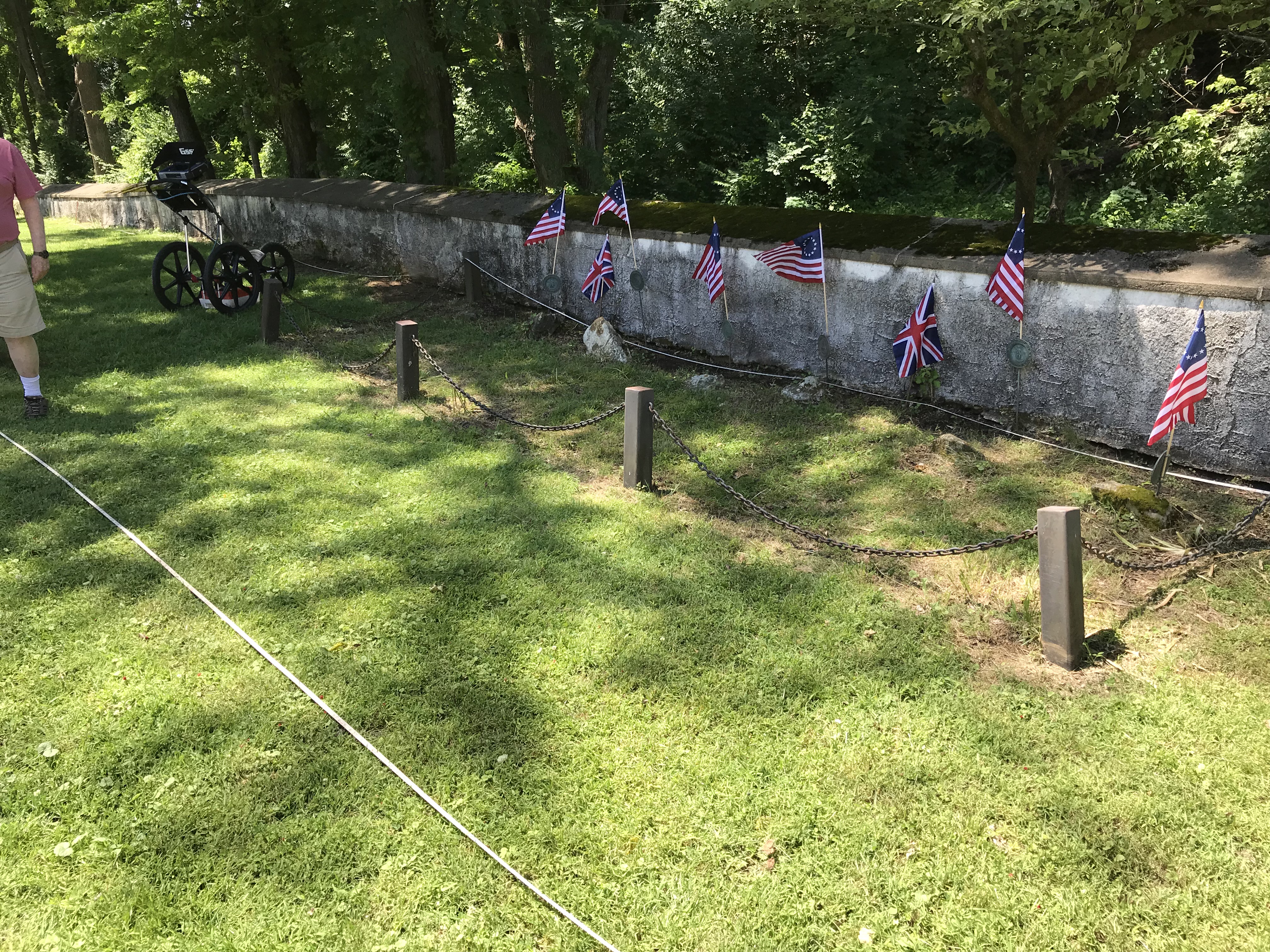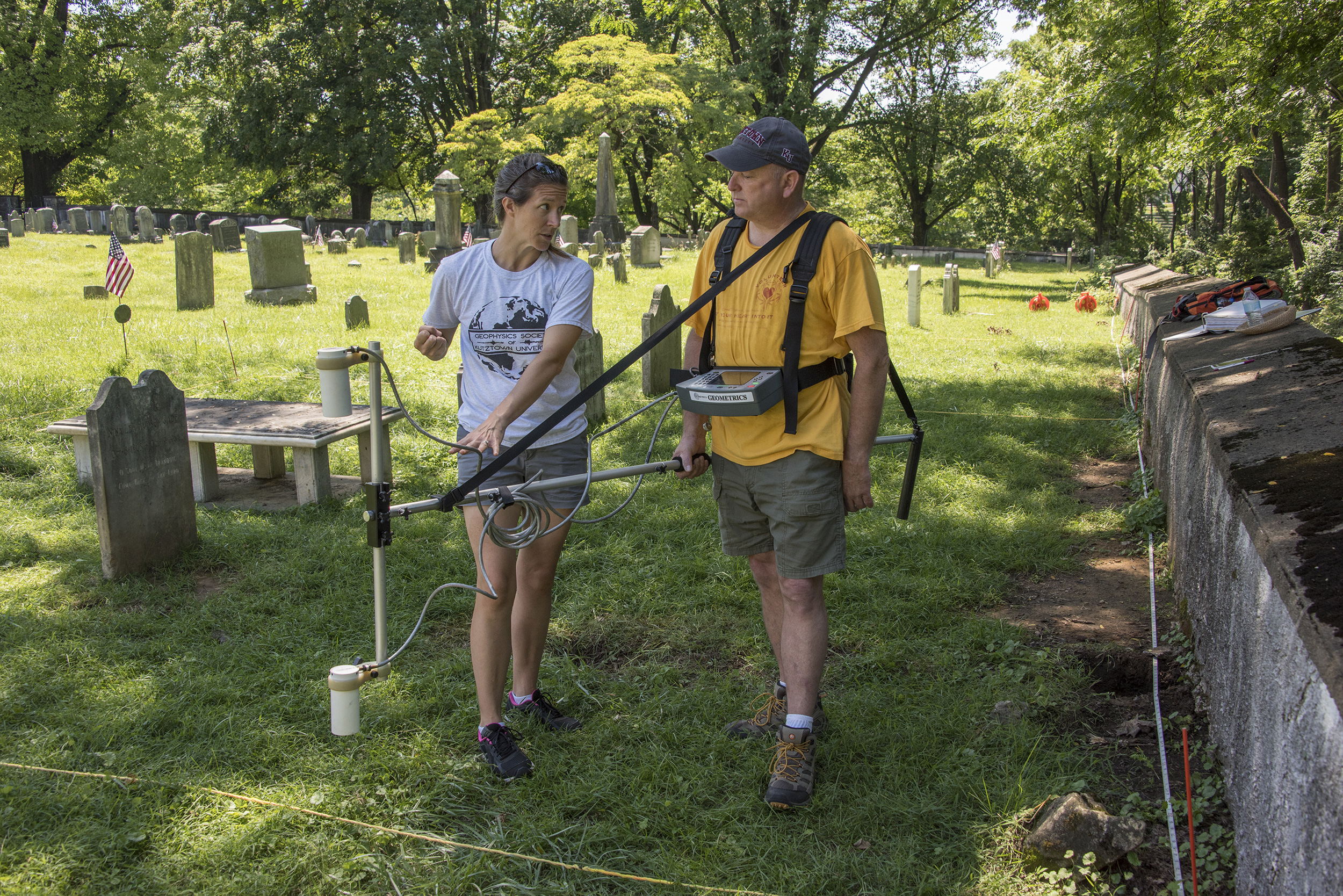|
The Battle of Paoli was
a Revolutionary War encounter fought during
the night of 20 and 21 September, 1777 in
what is now Malvern, PA. British Major
General Charles Gray, leading a special
detachment of 1,200 elite light infantryman,
surprised the Pennsylvania Line, two
understrength infantry brigades totaling
between 1,200 and 1,500 Americans led by
Brig. General Anthony Wayne. The midnight
assault by the British was a brutal affair,
and routed the Pennsylvanians. At least 52
American soldiers were killed that night,
and including killed, wounded or missing,
Wayne's division suffered 272 casualties.
The British Army suffered relatively
minor casualties, with three British
soldiers killed, including the commander of
their elite Light Company, Captain William
Wolfe. Tradition holds that these three
soldiers, plus as many as eight American
dead, were hastily buried by the British
early the next morning along the western
stone wall within the churchyard of an
Anglican parish, Saint Peter’s Church in the
Great Valley, three miles from the
battlefield. Captain Wolfe would have been
buried wearing his uniform jacket with its
distinctive pattern of pewter buttons, as
well as his metal gorget worn around his
neck to signify his rank and authority. It
is also quite possible that this officer
would have been buried with his sword.
|

Memorial site of the fallen British and
American soldiers.
|
|

Dr. Sherrod (left) and Kim Shollenberger
(right) survey the area with the G-858
magnetometer.
|
In the summer of 2019 the Geophysics Society
of Kutztown University (GSKU) was invited to
this old churchyard by Roger Thorne to perform geophysical
investigations with the purpose of verifying
the location of these burials of British and
American soldiers. Preliminary geophysical
surveying was performed with ground
penetrating radar (GPR) on 11 June 2019. A
potential mass burial site was interpreted
from this reconnaissance geophysical survey,
which prompted a return to the site on 15
July with two additional geophysical
instruments: magnetometer and resistivity
meter. Though the results of these two
surveys were inconclusive, sufficient
anomalies allow for the interpretation of
possible locations of the burial of these
British and American soldiers.
|